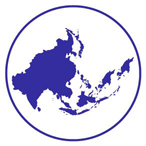Presentation Title
WASH Education: Need for More than Water Treatment for Floating Villages in Cambodia
Location
Council Chambers
Start Date
11-10-2013 3:45 PM
End Date
11-10-2013 5:15 PM
Abstract
Point of use (POU) water treatment systems are widely used around the world to provide microbiologically safe drinking water in developing countries. Work done in Cambodia by Brown et al. (2007) and Liang et al. (2010) have documented ceramic and biosand filters as cost effective point of use treatment systems capable of removing over 95% E. coli bacteria when properly used and maintained. Bridgewater State University and Water for Cambodia (WfC) explored using BioSand filters (BSF) to provide microbiologically safe drinking water for people in the Moat Khla floating village on the Tonle Sap Lake in Siem Reap Province. All 189 families use the lake for their water source which by WHO standards is deemed unsafe.
An intensive follow up study in February 2011 of 40 families using BSF’s and 40 families not using BSF’s showed over 90% of the households were using high risk lake source water(> 100 CFU’s of E. coli /100 ml). However, only 2.5% of BSF households had bacteria levels in the high risk range in their filtered water while 40% of Non-BSF households had storage water in the high risk range.
Demand for BSF’s increased to 80 by February 2011 even though a floating UV filtration system funded by regional aid agencies was placed in the community. Non-BSF families that could purchase UV or BSF treated water, or who boiled their water still had high levels of bacteria in their stored water raising questions on appropriate water treatment and storage technology for remote floating villages in Cambodia.
Included in
Environmental Health Commons, Environmental Microbiology and Microbial Ecology Commons, Environmental Public Health Commons, International Public Health Commons
WASH Education: Need for More than Water Treatment for Floating Villages in Cambodia
Council Chambers
Point of use (POU) water treatment systems are widely used around the world to provide microbiologically safe drinking water in developing countries. Work done in Cambodia by Brown et al. (2007) and Liang et al. (2010) have documented ceramic and biosand filters as cost effective point of use treatment systems capable of removing over 95% E. coli bacteria when properly used and maintained. Bridgewater State University and Water for Cambodia (WfC) explored using BioSand filters (BSF) to provide microbiologically safe drinking water for people in the Moat Khla floating village on the Tonle Sap Lake in Siem Reap Province. All 189 families use the lake for their water source which by WHO standards is deemed unsafe.
An intensive follow up study in February 2011 of 40 families using BSF’s and 40 families not using BSF’s showed over 90% of the households were using high risk lake source water(> 100 CFU’s of E. coli /100 ml). However, only 2.5% of BSF households had bacteria levels in the high risk range in their filtered water while 40% of Non-BSF households had storage water in the high risk range.
Demand for BSF’s increased to 80 by February 2011 even though a floating UV filtration system funded by regional aid agencies was placed in the community. Non-BSF families that could purchase UV or BSF treated water, or who boiled their water still had high levels of bacteria in their stored water raising questions on appropriate water treatment and storage technology for remote floating villages in Cambodia.

Comments
Presentation is included in Panel 8: Environment and Sustainable Development in Asia